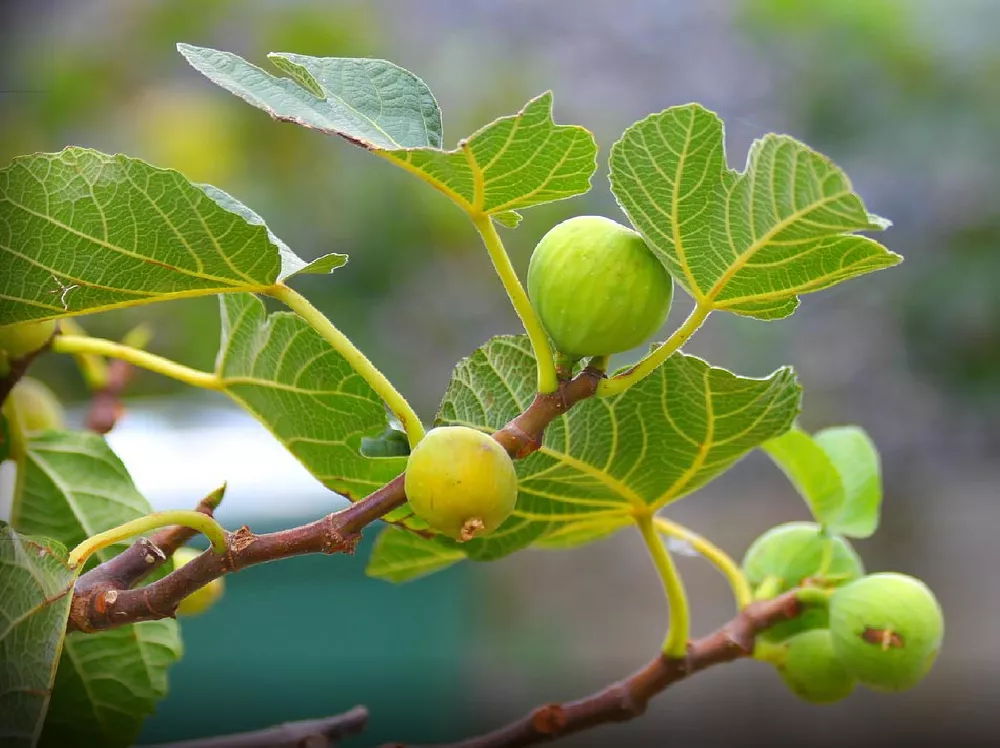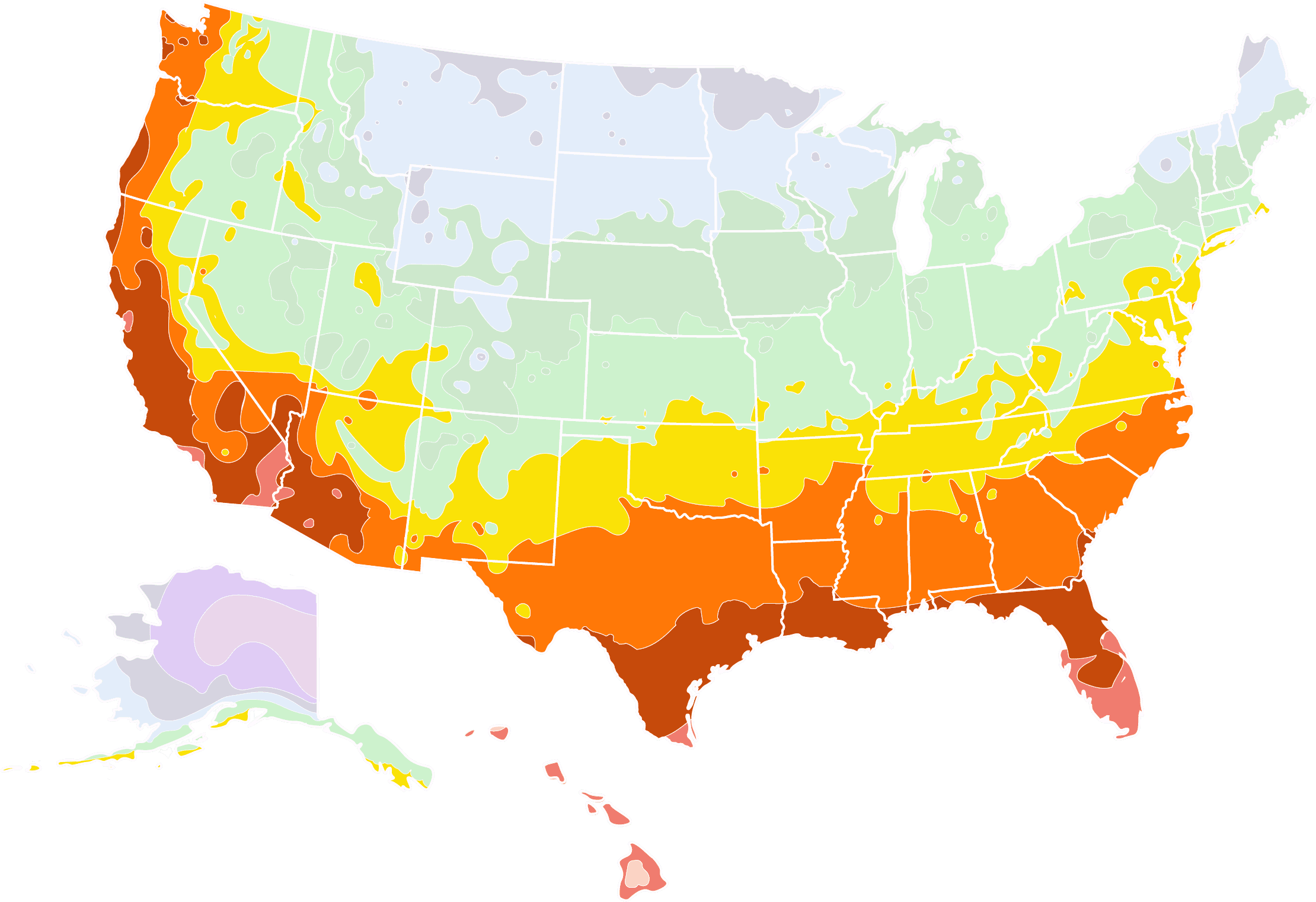- Home >
- Ornamental Plants >
- Yellow Fig Tree
Yellow Fig Tree for Sale - Buying & Growing Guide
Figs have been a part of human culture for thousands of years, and there is no reason that you can't enjoy growing these delectable fruits in your yard right now. Yellow figs, which have the botanical name Ficus carica, come in several different varieties, all of which create great harvest while thriving in some difficult growing conditions. These plants also show an admirable ability to resist disease and grow leaves that add ornamental value to the garden all on their own.
- The yellow fig tree produces one of the oldest and most popular fruits in the world.
- It thrives even in adverse conditions and wards off most diseases.
- It has broad leaves with an interesting shape.
Enter your zip code to find nearby stores that may carry this plant.
Plant Care
Sunlight

The yellow fig tree grows best with full sun exposure.
Watering
Water your fig tree about once per week. Increase watering during hot weather and times of drought.
Fertilizing

Use a balanced fertilizer with low amounts of each macronutrient every few months during the growing season.
Planting and Care
Planting instructions
To start the planting process for a yellow fig tree, begin with a planting hole that is as deep as the tree’s root ball is tall and at least twice as wide as the root ball. Remove your tree from its container and rough up the roots to encourage them to spread outward rather than tangling into each other. Place the tree in the hole and backfill with healthy soil. Provide plenty of water during planting and continue to do so during the first few months of growth.
Watering and nutrients
Young yellow fig trees need water about once per week, and mature trees may need a similar amount. However, it is important not to overwater your yellow fig. For that reason, it is best to monitor the soil around your tree and allow it to become slightly dry before you add more water. Fertilize your yellow fig tree with a mix that has low but equal amounts of nitrogen, phosphorus, and potassium. Apply fertilizer about every two months during the growing season.
Pollination
Yellow fig trees, and all other figs, are unique because they rely on a single pollinator species to conduct pollination. The fig wasp uses parts of the fig tree to lay eggs and produce their offspring. During that endeavor, the wasps carry pollen from one part of a fig tree to another. Each individual yellow fig tree is self-pollinating as well, meaning that you need to buy only one of these trees to produce a harvest of figs.
Pruning
The best time to prune a yellow fig tree is in the late winter, just as the tree is ending its dormancy period. Begin the pruning process by identifying which branches will become the main fruit-bearing parts of the tree. Remove other branches that are smaller or otherwise unsuitable for holding fruits. You should also take off branches that grow at a weak angle, as they will probably break under the weight of the fruits to come later in the year.
Pests, diseases, and animals
Pests can be a common problem for gardeners who grow yellow fig trees. Among these pests, several types of nematodes are some of the most likely to stunt your tree’s growth. However, there is a long list of other insects that can harm the yellow fig tree, including scale, mites, beetles, and earwigs. Diseases can also befall a yellow fig tree, with some of the most common ones being anthracnose, leaf spot, and some forms of rust.
Harvesting
Yellow fig trees are usually ready for harvest in the mid-summer to early fall. However, you should be careful not to pick your figs too early — they will not ripen off of the plant. As the name suggests, yellow fig trees produce figs that are yellow when ripe. Wait until your figs have achieved this color before you remove them. Be gentle when removing a fig, whether you use your hands or decide to use a tool to cut the fig from its branch.
Achieving maximum results
The best care for your fig tree depends on the specific variety that you have. Make sure that you study the growing conditions and maintenance needs for a yellow fig tree before you commit to growing one. In most cases, you’ll need to protect your fig tree from any cold winds or frost. As such, those in colder zones will need to grow this plant in a container and overwinter it as soon as the temperature drops.
FAQs
What is a yellow fig?
Simply put, a yellow fig is any type of fig that takes on a yellow color when it is ripe. Other types of figs will show different colors that are typically much darker. There are multiple kinds of fig trees that claim the name "yellow fig," Some of the most popular ones are called “yellow longneck” and “white Marseilles.” But while there are many different kinds of figs, most of these plants require a similar care routine.
Are figs toxic to pets?
Anyone interested in fig trees knows that the main attraction of these plants is the fruits they produce. However, these same fruits that humans enjoy eating can be detrimental to pets such as dogs. Dogs that ingest any part of a fig plant may experience diarrhea, vomiting, and skin issues. Since these dangers exist, you should be careful about letting your pets near any fig tree you're growing.
How old are fig trees?
One of the more intriguing aspects of fig trees is that they have quite a long history. Archeological evidence suggests that fig trees have been around since at least 5,000 B.C. Figs are among the very first plants that humans began cultivating, a practice that likely began in parts of Africa and the Mediterranean region in prehistoric times. Since that time, fig trees have continued to be a reliable cultivated food source for people throughout the world.
Compare Similar Products
You can't add more Product Name - Product size to the cart.
OK









